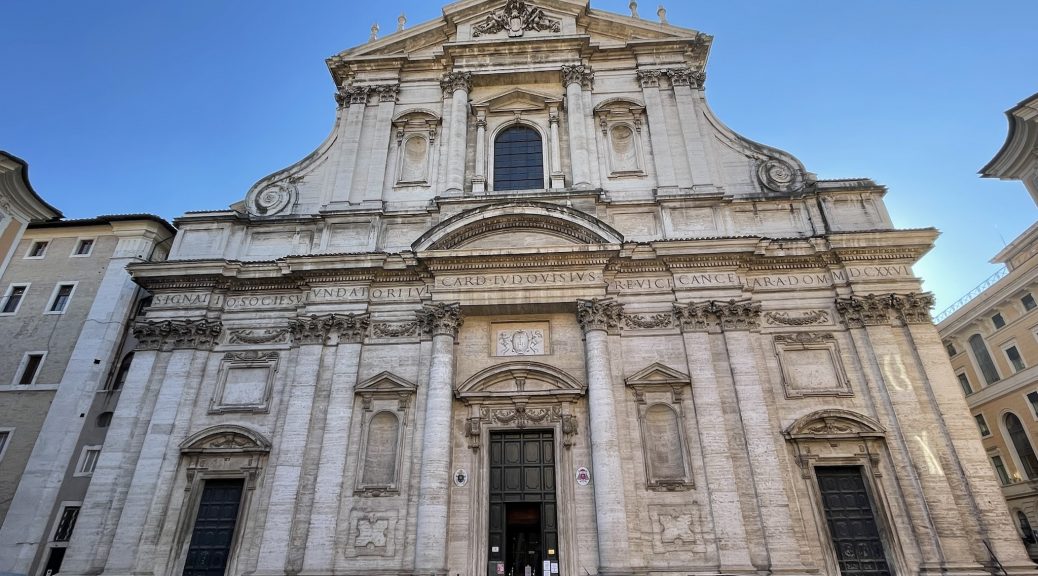
Exploring the Pantheon and the Church of Saint Ignatius
Last week I took a bus to the city center to explore the area in between classes. I visited the Pantheon, Minerva Square and The Church of Saint Ignatius of Loyola.
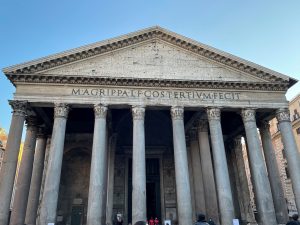
I started by visiting the Pantheon, a Roman temple, originally built in 27 BC by Marcus Agrippa and then rebuilt by Emperor Hadrian around 120 AD. It was later repurposed as a Christian Church dedicated to all martyrs. Its dome inspired the Florence cathedral dome, the dome of Saint Peters, and the US Capitol dome in Washington. The oculus on top lights up the building and the altars along the walls acting as the only source of light.
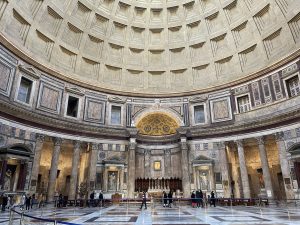
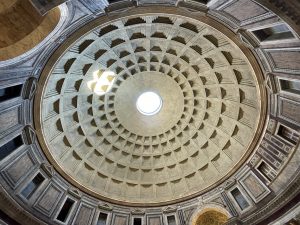
Along the walls are a series of altars and tomb stones added in the 1700s once the temple was turned into a Christian Church. They were commissioned by Pope Clement XI and designed by Alessandro Specchi.
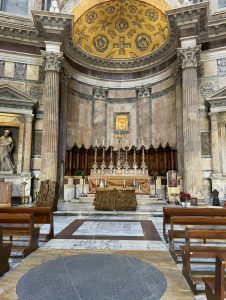 The main altar is decorated with gold and bronze elements as well as mosaics.
The main altar is decorated with gold and bronze elements as well as mosaics.
Statues of San Rasso and Saint Anastasius adorn its sides.
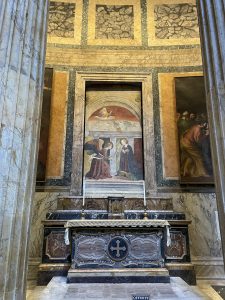
The Chapel of the Annunciation with a fresco painted by Melozzo da Forli.
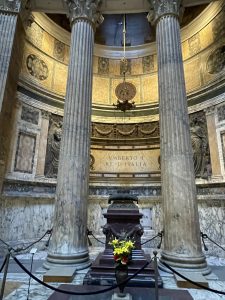
Tomb of Umberto I, second king of Italy.
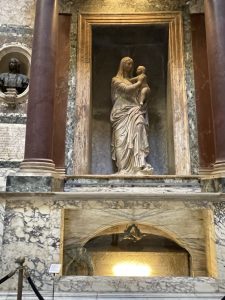
Tomb of Raphael, an Italian painter and architect of the High Renaissance.
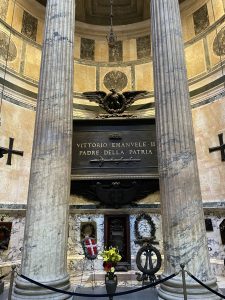
Tomb of Victor Emmanuel II, father of Italy.
Afterwards I kept walking around the Pantheon and found the square of Minerva through an alleyway behind the Pantheon. I keep getting surprised whenever I find these churches, piazzas and obelisks around the city. Unfortunately the Church of Santa Maria sopra Minerva was closed but I might go back and visit it later.
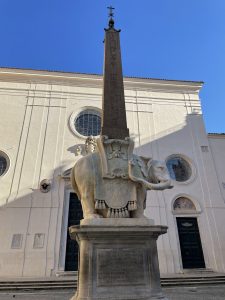
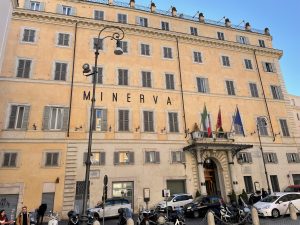
I kept walking and after looking at Google Maps I found the piazza of Saint Ignatius of Loyola was nearby. It felt like a fun coincidence and since I am a Loyola student I thought it would be a great idea to go inside and explore.
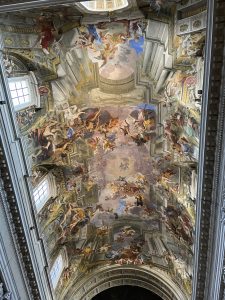
After entering the Church I immediately turned to look at the ceiling and I saw this beautiful painting, depicting Saint Ignatius accompanied by angels. It includes an optical illusion of height and looking into the infinite sky.
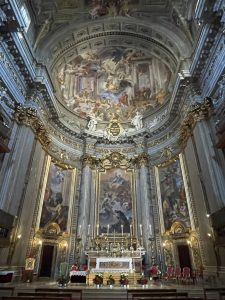
I then walked to the front approaching the main altar, painted during the late 1600s and early 1700s. The paintings illustrate key moments in Saint Ignatius’s life and his vocation as well as the foundation of the Society of Jesus.
The altars and tombs around the main area dedicated to Jesuit saints. They are decorated with impressive marble statues, golden details, frescoes and spiraling columns. Each altar has a small dome on top with images of the sky and angels, including a light source illuminating the paintings.
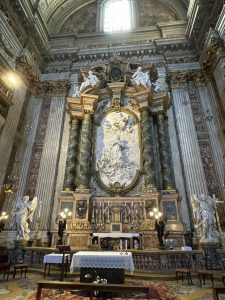
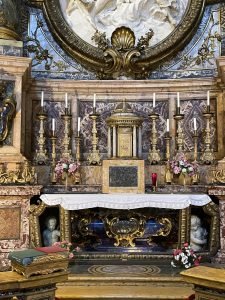
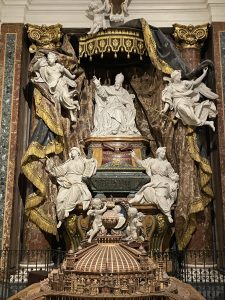
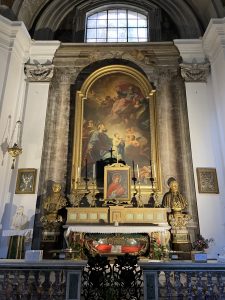
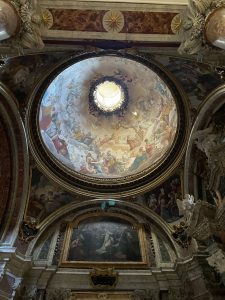
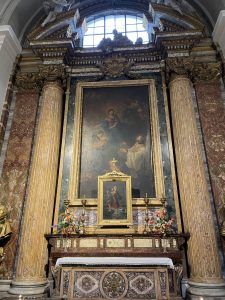
I really liked this church, I loved all the detail put into the structure and the way a building itself can embody and honor the life and legacy of Saint Ignatius.
Then I continued walking around until it was time to go back to campus. I enjoyed simply walking around Rome without a clear destination, finding obelisks, fountains, and monuments around the city. There is an undeniable charm to a city filled with so much art and culture at every turn.